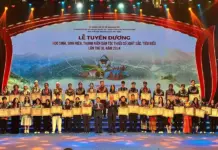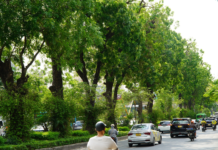|
Tourists visit Bukchon Hanok Village. The village has 900 traditional wooden houses which were restored and upgraded in 1930. The doors of houses in the village are made with wood with stone stairs. Tourists can stay at a house in the village to learn about the life of Korean noble families during the feudal period. Patterns of the country’s cuisine on the walls of a house in the village. The architecture of a Hanok with stone roofs and a system of wooden beams. About 300 houses in the village were restored and upgraded to become cultural centres and arts galleries. Traditional pottery products of RoK displayed in houses. Decorative carpets in the village’s houses. Tourists to the village enjoy this country’s cultural features, such as wearing traditional costumes and taking a stroll in alleys. There are many traditional souvenir shops. An eye-catching arrangement in a window of a house. A souvenir shop. A shop selling classic watches. A souvenir shop of toys and masks. Wood blocks for traditional paintings. Clay statues decorate a house in the village.. |
Bukchon Hanok Village is considered “a street museum at the heart of Seoul” because it has preserved the typical traditional cultural features of RoK.



